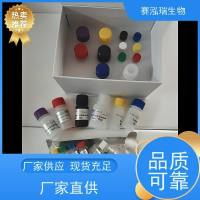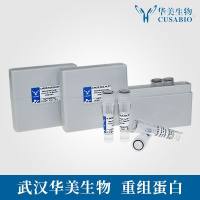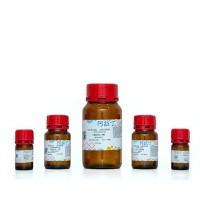Size‐Exclusion Chromatography with On‐Line Light Scattering
互联网
- Abstract
- Table of Contents
- Materials
- Figures
- Literature Cited
Abstract
This unit describes the use of size?exclusion chromatography with on?line light scattering, UV absorbance, and refractive index detectors (SEC?LS/UV/RI) to determine: (a) the molecular weight of simple proteins containing no carbohydrates, (b) the molecular weight of glycoproteins, and (c), most importantly, the molecular weight and stoichiometry of protein?protein complexes or protein?carbohydrate complexes. Multiangle light scattering is also discussed.
Table of Contents
- Basic Protocol 1: Using Refractive Index and Light Scattering to Calculate the Molecular Weight and Degree of Self‐Association of Proteins Containing no Carbohydrates (Two‐detector Method)
- Alternate Protocol 1: Combination of LS and UV Detectors to Calculate the Molecular Weight of Nonglycosylated Proteins (Two‐detector Method)
- Alternate Protocol 2: SEC/LS for Large Proteins: Debye Analysis
- Alternate Protocol 3: Absolute Molecular Weight Calibration Method
- Basic Protocol 2: Calculating the Stoichiometry of a Protein‐Protein Complex Containing no Carbohydrates Using LS/RI
- Alternate Protocol 4: Calculating the Stoichiometry of Protein‐Protein Interactions for Nonglycosylated Proteins Using LS/UV
- Basic Protocol 3: Calculating the Molecular Weight of Glycoproteins or Protein Conjugates Using Three Detectors
- Basic Protocol 4: Determining the Stoichiometry of a Protein‐Protein Complex Containing Carbohydrates
- Support Protocol 1: Sample Analysis: Receptor‐Ligand Interactions
- Basic Protocol 5: Analysis of Protein‐heparin Interactions Using Three Detectors
- Reagents and Solutions
- Commentary
- Literature Cited
- Figures
- Tables
Materials
Basic Protocol 1: Using Refractive Index and Light Scattering to Calculate the Molecular Weight and Degree of Self‐Association of Proteins Containing no Carbohydrates (Two‐detector Method)
Materials
|
Figures
-
Figure 20.6.1 A typical configuration for SEC‐LS/UV/RI (size‐exclusion chromatography with on‐line light scattering, UV absorbance, and refractive index detection). View Image -
Figure 20.6.2 A typical plot of LS/RI versus the molecular weights of protein standards (RNase, ovalbumin, and BSA). 100 µl of each protein standard was injected onto a SEC column separately, to obtain more accurate data (slight overlap may occur for some SEC columns). Typical protein concentrations were 2.0, 1.5, and 1.5 mg/ml for RNase, ovalbumin, and BSA, respectively. Reproduced from Wen et al. () with permission of Academic Press. View Image -
Figure 20.6.3 Chromatogram of BSA that contains monomers, dimers, and other oligomers. Commercial BSA from Sigma is a mixture of monomers, dimers, and higher oligomers. The molecular weight of peak 1 calculated from the two‐detector method is 132,000, which agrees well with twice the BSA sequence molecular weight of 66,269, indicating that peak 1 is a BSA dimer. 100 µl of 4 mg/ml BSA was injected onto a Superose 6 column (Pharmacia) with PBS as eluent at 0.5 ml/min flow rate. The solid line is the LS signal and the dashed line is the RI signal. Reproduced from Wen et al. () with permission of Academic Press. View Image -
Figure 20.6.4 Chromatograms of native and reduced carboxymethylated (RCM)–RNase. 100 µl of each protein was injected onto a Superdex 75 column (Pharmacia) with PBS as eluent at a flow rate of 0.5 ml/min. (A ) 1 mg/ml of native RNase; (B ) 1 mg/ml of RCM‐RNase; (C ) chromatograms in panels A and B are put onto the same scale for comparing the LS/RI ratios of native and reduced RNase. The lines are the same as defined in Figure . Reproduced from Wen et al. () with permission of Academic Press. View Image -
Figure 20.6.5 Chromatograms of TNF, sTNFR, and the mixture of sTNFR and TNF. 100 µl of each protein was injected onto a Superose 12 column (Pharmacia) with PBS as eluent at a flow rate of 0.5 ml/min. (A ) TNF control sample (no sTNFR); (B ) sTNFR control sample (no TNF); (C ) a mixture of sTNFR and TNF made at a molar ratio of about three sTNFR per TNF. The solid line is the LS signal, the dashed line is the RI signal, and the dotted line is the UV signal. Reproduced from Wen et al. () with permission of Academic Press. View Image -
Figure 20.6.6 Chromatograms of E. coli SCF. CHO SCF contains >30% carbohydrate and thus the three‐detector method was used. 100 µl of 3.8 mg/ml of E. coli SCF was injected into a Superdex 200 column (Pharmacia) with PBS as eluent at a flow rate of 0.5 ml/min. The solid line is the LS signal, the dashed line is the RI signal, and the dotted line is the UV signal. Reproduced from Wen et al. () with permission of Academic Press. View Image -
Figure 20.6.7 Chromatograms of sTrkB and the mixture of sTrkB and BDNF. 100 µl of each protein was injected onto a Superdex 200 column (Pharmacia) with PBS as eluent at a flow rate of 0.5 ml/min. (A ) sTrkB control sample (no BDNF); (B ) a mixture of sTrkB and BDNF made at a molar ratio of about two sTrkB per BDNF. The lines are the same as defined in Figure . Reproduced from Wen et al. () with permission of Academic Press. View Image -
Figure 20.6.8 Chromatograms of MAb35, sHer2, and the mixture of sHer2 and MAb35. 100 µl of each protein was injected onto a Superdex 200 column (Pharmacia) with PBS as eluent at a flow rate of 0.5 ml/min. (A ) MAb35 control sample (no sHer2); (B ) sHer2 control sample (no MAb35). (C ) A mixture of MAb35 and sHer2 made at a molar ratio of about 2.7 sHer2 per MAb35. The lines are the same as defined in Figure . Reproduced from Wen et al. () with permission of Academic Press. View Image -
Figure 20.6.9 Chromatograms of bFGF and HMWH mixtures (UV absorbance traces only). All samples contained 117 µM bFGF, and the amount of HMWH varied. The [HMWH]/[bFGF] molar ratio was 0.011:1 for B, 0.022:1 for C, 0.056:1 for D, 0.11:1 for E, 0.22:1 for F, and 0.43:1 for G. Sample A (bFGF control) is not shown here. 100 µl of each mixture was injected onto a Superdex 200 column (Pharmacia) with PBS as eluent at 0.5 ml/min flow rate. Reproduced from Wen et al. () with permission of Academic Press. View Image
Videos
Literature Cited
| Literature Cited | |
| Arakawa, T. and Wen, J. 2000. Refractive index of proteins in aqueous NaCl. Anal. Biochem. 280:327‐329. | |
| Arakawa, T., Yphantis, D.A., Lary, J.W., Narhi, L.O., Lu, H.S., Prestrelski, S.J., Clogston, C.L., Zsebo, K.M., Mendiaz, E.A., Wypych, J., and Langley, K.E. 1991. Glycosylated and unglycosylated recombinant‐derived human stem cell factors are dimeric and have extensive regular secondary structure. J. Biol. Chem. 266:18942‐18948. | |
| Arakawa, T., Langley, K.E., Kameyama, K., and Takagi, T. 1992. Molecular weights of glycosylated and nonglycosylated forms of recombinant human stem cell factor determined by low‐angle laser light scattering. Anal. Biochem. 203:53‐57. | |
| Arakawa, T., Wen, J., and Philo, J.S. 1994. Stoichiometry of heparin binding to basic fibroblast growth factor. Arch. Biochem. Biophys. 308:267‐273. | |
| Arakawa, T., Holst, P., Narhi, L.O., Philo, J.S., Wen, J., Prestrelski, S.J., Zhu, X., Rees, D.C., and Fox, G.M. 1995. The importance of Arg40 and 45 in the mitogenic activity and structural stability of basic fibroblast growth factor: Effects of acidic amino acid substitutions J. Prot. Chem. 14:263‐274. | |
| Dollinger, G., Cunico, B., Kunitani, M., Johnson, D., and Jones, R. 1992. Practical on‐line determination of biopolymer molecular weights by high‐performance liquid chromatography with classical light‐scattering detection. J. Chromatogr. 592:215‐228. | |
| Gombotz, W.R., Pankey, S.C., Phan, D., Drager, R., Donaldson, K., Antonsen, K.P., Hoffman, A.S., and Raff, H.V. 1994. The stabilization of a human IgM monoclonal antibody with poly(vinylpyrrolidone). Pharm. Res. 11:624‐632. | |
| Horan, T., Wen, J., Arakawa, T., Liu, N., Brankow, D., Hu, S., Ratzkin, B., and Philo, J.S. 1995. Binding of Neu differentiation factor with the extracellular domain of Her2 and Her3. J. Biol. Chem. 270:24604‐24608. | |
| Horan, T., Wen, J., Narhi, L., Parker, V., Arakawa, T., and Philo, J. 1996. Dimerization of the extracellular domain of granuloycte‐colony stimulating factor receptor by ligand binding: A monovalent ligand induces 2:2 complexes. Biochemistry. 35:4886‐4896. | |
| Jackson, C. and O'Brien, J.P. 1995. Molecular weight distribution of Nephila clavipes dragline silk. Macromolecules 28:5975‐5977. | |
| Kato, A., Kameyama, K., and Takagi, T. 1992. Molecular weight determination and compositional analysis of dextran‐protein conjugates using low‐angle laser light scattering technique combined with high‐performance gel chromatography. Biochim. Biophys. Acta 1159:22‐28. | |
| Kita, Y., Tseng, J., Horan, T., Wen, J., Philo, J., Chang, D., Ratzkin, B., Pacifici, R., Brankow, D., Hu, S., Luo, Y., Wen, D., Arakawa, T., and Nicolson, M. 1996. ErbB receptor activation, cell morphology changes, and apoptosis induced by anti‐Her2 monoclonal antibodies. Biochem. Biophys. Res. Commun. 226:59‐69. | |
| Lu, H.S., Chang, D., Philo, J.S., Zhang, K., Narhi, O.L., Liu, N., Zhang, M., Sun, J., Wen, J., Yanagihara, D., Karunagaran, D., Yarden, Y., and Ratzkin, B. 1995. Studies on the structure and function of glycosylated and nonglycosylated neu differentiation factors. Similarities and differences of the alpha and beta isoforms. J. Biol. Chem. 270:4784‐4791. | |
| Narhi, L.O., Rosenfeld, R., Wen, J., Arakawa, T., Prestrelski, S.J., and Philo, J.S. 1993. Acid‐induced unfolding of brain‐derived neurotrophic factor results in the formation of a monomeric “A state.” Biochemistry 32:10819‐10825. | |
| Pace, C.N., Vajdos, F., Fee, L., Grimsley, G., and Gray, T. 1995. How to measure and predict the molar absorption coefficient of a protein. Prot. Sci. 4:2411‐2423. | |
| Philo, J.S., Rosenfeld, R., Arakawa, T., Wen, J., and Narhi, L.O. 1993. Comparison of solution properties of human and rat ciliary neurotrophic factor. Biochemistry 32:10812‐10818. | |
| Philo, J., Talvenheimo, J., Wen, J., Rosenfeld, R., Welcher, A., and Arakawa, T. 1994. Interactions of neurotrophin‐3 (NT‐3), brain‐derived neurotrophic factor (BDNF), and the NT‐3.BDNF heterodimer with the extracellular domains of the TrkB and TrkC receptors. J. Biol. Chem. 269:27840‐27846. | |
| Philo, J.S., Aoki, K.H., Arakawa, T., Narhi, L.O., and Wen, J. 1996a. Dimerization of the extracellular domain of the erythropoietin (EPO) receptor by EPO: One high‐affinity and one low‐affinity interaction. Biochemistry 35:1681‐1691. | |
| Philo, J.S., Wen, J., Wypych, J., Schwartz, M.G., Mendiaz, E.A., and Langley, K.E. 1996b. Human stem cell factor dimer forms a complex with two molecules of the extracellular domain of its receptor, Kit. J. Biol. Chem. 271:6895‐6902. | |
| Stuting, H.H., Krull, I.S., Mhatre, R., Krzysko, S.C., and Barth, H.G. 1992. performance liquid chromatography of biopolymers using on‐line laser light scattering photometry. LC‐GC. 7:402‐415. | |
| Takagi, T. 1985. Determination of protein molecular weight by gel permeation chromatography equipped with low‐angle laser light scattering photometer. In Progress in HPLC (D.R. Paryez, eds.) 1 pp. 27‐41. VNU Science Press, Utrecht, The Netherlands. | |
| Takagi, T. 1990. Application of low‐angle laser light‐scattering detection in the field of biochemistry. J. Chromatogr. 506:409‐416. | |
| Wen, J., Arakawa, T., and Philo, J.S. 1996a. Size‐exclusion chromatography with on‐line light‐scattering, absorbance, and refractive index detectors for studying proteins and their interactions. Anal. Biochem. 240:155‐166. | |
| Wen, J., Arakawa, T., Talvenheimo, J., Welcher, A., Horan, T., Kita, Y., Tseng, J., Nicolson, M., and Philo, J.S. 1996b. A light‐scattering/size exclusion chromatography method for studying the stoichiometry of a protein‐protein complex. In Techniques in Protein Chemistry VII (D.R. Marshak, ed.) pp. 23‐31. Academic Press, San Diego. | |
| Wen, J., Philo, J.S., Arakawa, T., Rosendahl, M., and Narhi, L.O. 1996c. A light‐scattering/size exclusion chromatography method for studying the stoichiometry of a protein‐protein complex. In Techniques in Protein Chemistry VII (D.R. Marshak, ed.) pp. 23‐31. Academic Press, San Diego. | |
| Wen, J., Arakawa, T., Wypych, J., Langley, K.E., Schwartz, M.G., and Philo, J.S. 1997. Chromatographic determination of extinction coefficients of non‐glycosylated proteins using refractive index (RI) and UV absorbance detectors: Applications for studying protein interactions by size exclusion chromatography with light‐scattering, UV and RI detectors. In Techniques in Protein Chemistry VIII (D.R. Marshak, eds.) pp. 113‐119. Academic Press, San Diego | |
| Wyatt, P.J. 1993. Light‐scattering and the absolute characterization of macromolecules. Anal. Chim. Acta 272:1‐40. | |
| Wyatt, P.J., Jackson, C., and Wyatt, G.K. 1988. Absolute GPC determinations of molecular weights and sizes from light scattering Am. Lab. 20:86‐89. | |
| Zhang, M.Z., Wen, J., Arakawa, T., and Prestrelski, S.J. 1995. A new strategy for enhancing the stability of lyophilized protein: The effect of the reconstitution medium on keratinocyte growth factor Pharm. Res. 12:1447‐1452. |







